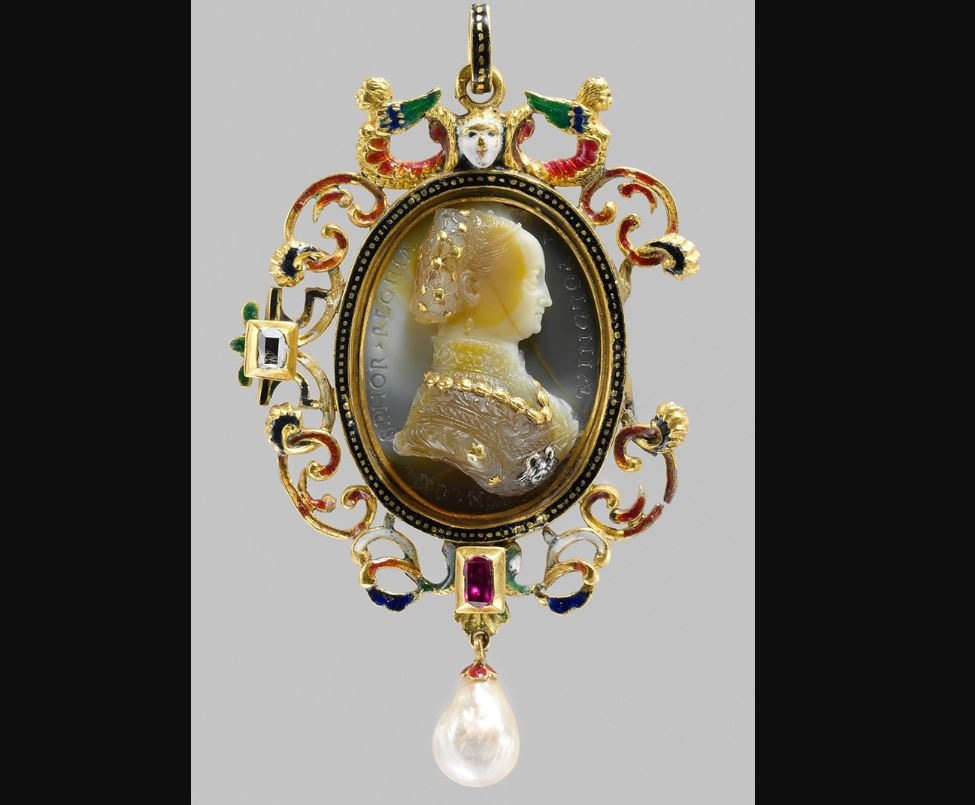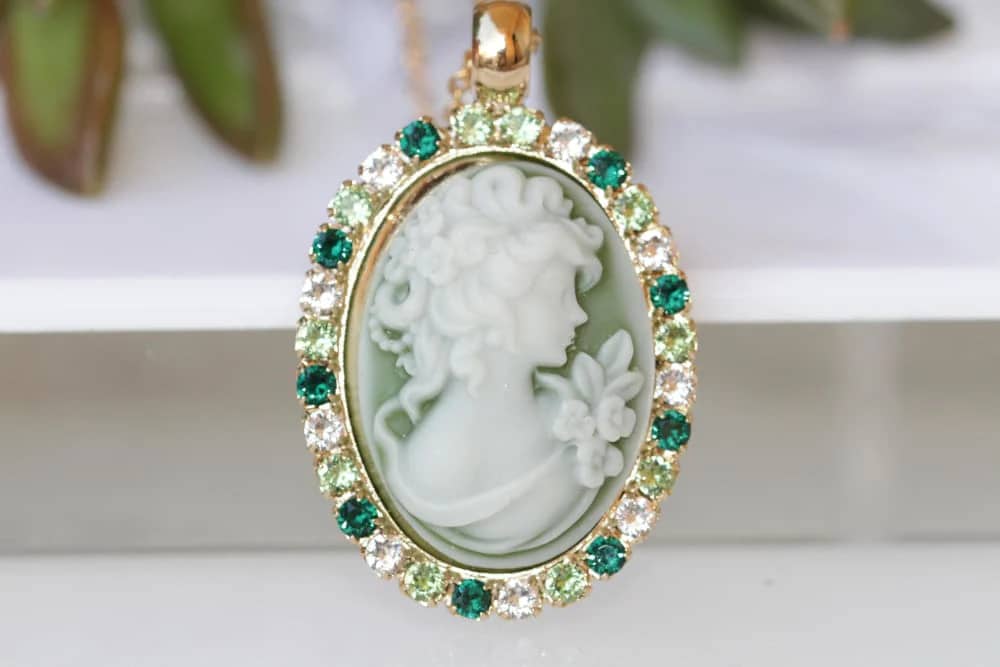Cameo jewelry has been around for centuries, with some of the earliest pieces dating back to Ancient Rome. Have you ever wondered what the history behind cameo jewelry is and what makes it so special? This article will explore the history and significance of cameo jewelry, from the Ancient Roman era to the modern day. You’ll discover why cameo jewelry is so beloved and why it has endured the test of time.
1. Origins of Cameo Jewelry
Cameo jewelry has been around for centuries and is still popular today. The origins of cameo jewelry can be traced back to ancient Greece and Rome, where carvings were made into stones and shells to create intricate designs. These designs were seen as a symbol of wealth and status and were often worn by royalty and the wealthy.
During the Renaissance period, cameo jewelry became a popular accessory for both men and women. The designs became more intricate and detailed, with artists using a variety of materials such as ivory, coral, and agate.
In the 19th century, cameo jewelry became even more popular due to Queen Victoria’s love of the style. The designs were often romantic and sentimental, featuring images of loved ones or scenes from nature.
Today, cameo jewelry is still popular and can be found in a variety of styles and materials. It is often used as a statement piece or as a way to add a vintage touch to an outfit.
If you’re interested in learning more about cameo jewelry, check out the Victoria and Albert Museum’s collection of cameos or the Smithsonian’s article on the history of cameo carving.

2. Iconography in Cameo Jewelry
Iconography plays a significant role in the design of cameo jewelry. The art of cameo making dates back to ancient times, and it involves carving a raised image on a contrasting background material. In many cases, the image is a portrait of a person or a mythological figure. Iconography refers to the symbolism behind the image carved on the cameo jewelry. For example, a cameo with an image of a woman with a torch might symbolize liberty or enlightenment.
During the Victorian era, cameo jewelry became popular, and the images on the jewelry reflected the values of the time. For example, a cameo with an image of a dove might symbolize peace, while a cameo with an image of a broken heart might symbolize mourning.
Today, cameo jewelry remains popular, and the iconography can be customized to reflect the wearer’s values and beliefs. If you’re interested in cameo jewelry, it’s essential to understand the symbolism behind the images.
We recommend checking out the Victoria and Albert Museum’s website for more information on cameo jewelry and its history.

3. Types of Cameo Jewelry
Cameo jewelry is a type of jewelry that features a relief design, typically of a person or an animal, that is carved into a stone, shell, or other material. It dates back to ancient times and has been popular ever since. There are many types of cameo jewelry, each with its own style and meaning.
The most common type of cameo jewelry is the “bas relief” style, which features a shallow relief of the subject. This type of jewelry is often seen as a symbol of love, loyalty, or friendship. Another popular type of cameo jewelry is the “high relief” style, which features a deeper relief of the subject. This type of jewelry often carries a more powerful message, such as strength or courage.
The “intaglio” style of cameo jewelry is also very popular. This style features a design that is carved into the stone or shell and is often seen as a symbol of wisdom or protection. Finally, there is the “reverse cameo” style, which features a design that is carved into the back of the stone or shell. This type of jewelry is often seen as a symbol of good luck or fortune.
No matter what type of cameo jewelry you choose, it is sure to be a beautiful and timeless piece that will last for generations. For a truly unique look, consider adding a personal touch by having a custom design carved into the stone or shell. This will create a one-of-a-kind piece that will be cherished for years to come.
4. Historic Significance of Cameo Jewelry
Cameo jewelry has been around for thousands of years and has played a significant role in history. The earliest cameos were created by the ancient Greeks and Romans, who used them to depict gods and goddesses, as well as important historical figures. These early cameos were often carved from precious stones such as sapphires, rubies, and emeralds.
During the Renaissance, cameos were highly prized by the wealthy and were often used as a symbol of status and wealth. Many Renaissance cameos featured intricate carvings of religious scenes or important historical events.
In the 18th and 19th centuries, cameos became more accessible to the middle class, as advances in technology made it possible to create them from less expensive materials such as shell and ivory. During this time, cameos were often used to commemorate important events, such as weddings and graduations.
Today, cameos are still popular and are often used as a way to express individual style and personality. They can be found in a variety of materials, including glass, plastic, and even resin.
An example of a stunning cameo pendant featuring a carved portrait of a woman.

5. Modern Appreciation of Cameo Jewelry
Modern appreciation of cameo jewelry has seen a resurgence in popularity in recent years. This is due to a renewed interest in vintage and antique styles, as well as an appreciation for the intricate craftsmanship involved in creating these pieces. Cameo jewelry is often seen as a symbol of elegance and sophistication, and is a popular choice for special occasions such as weddings and formal events.
One reason for the enduring appeal of cameo jewelry is the variety of materials that can be used to create them. Cameos can be made from materials such as shell, stone, coral, and even glass. The intricate carving and detailing of the design is what makes cameo jewelry so special, and each piece is truly unique.
Another reason for the popularity of cameo jewelry is the versatility of the pieces. Cameos can be incorporated into a range of jewelry styles, from rings and necklaces to brooches and earrings. They can be worn as statement pieces or as subtle accents to an outfit.
Overall, cameo jewelry is a timeless and elegant choice for anyone looking to add a touch of sophistication to their jewelry collection.

6. Care and Maintenance of Cameo Jewelry
Cameo jewelry is an iconic symbol of classic beauty and timeless elegance. While cameo jewelry is a beautiful piece to own, it is important to remember that it requires special care and maintenance to ensure its longevity. Here are some tips to help you care for your cameo jewelry:
- Keep your cameo jewelry away from direct sunlight and moisture. Prolonged exposure to sunlight can cause the colors in the cameo to fade, while moisture can cause the cameo to warp or corrode.
- Store your cameo jewelry in a cool, dry place. Avoid storing your cameo jewelry in the bathroom, as the moisture in the air may cause the cameo to corrode.
- Clean your cameo jewelry regularly. Use a soft jewelry cloth or a damp cloth with mild soap. Do not use harsh chemicals or abrasive cleaners, as these may damage the cameo.
- Handle your cameo jewelry with care. Do not drop or bang the cameo against hard surfaces, as this can cause the cameo to chip or crack.
- Have your cameo jewelry professionally inspected every few years. This will help ensure that the cameo is in good condition and that any necessary repairs are made.
Conclusion:
Cameo jewelry, with its intricate carvings on gemstones, shells, or other materials, has been a cherished art form for centuries. Originating from ancient civilizations, these pieces have evolved in design and significance, often reflecting the socio-political climates of their respective eras. Today, they remain a testament to skilled craftsmanship and timeless beauty, making them sought-after collectibles and cherished heirlooms.
